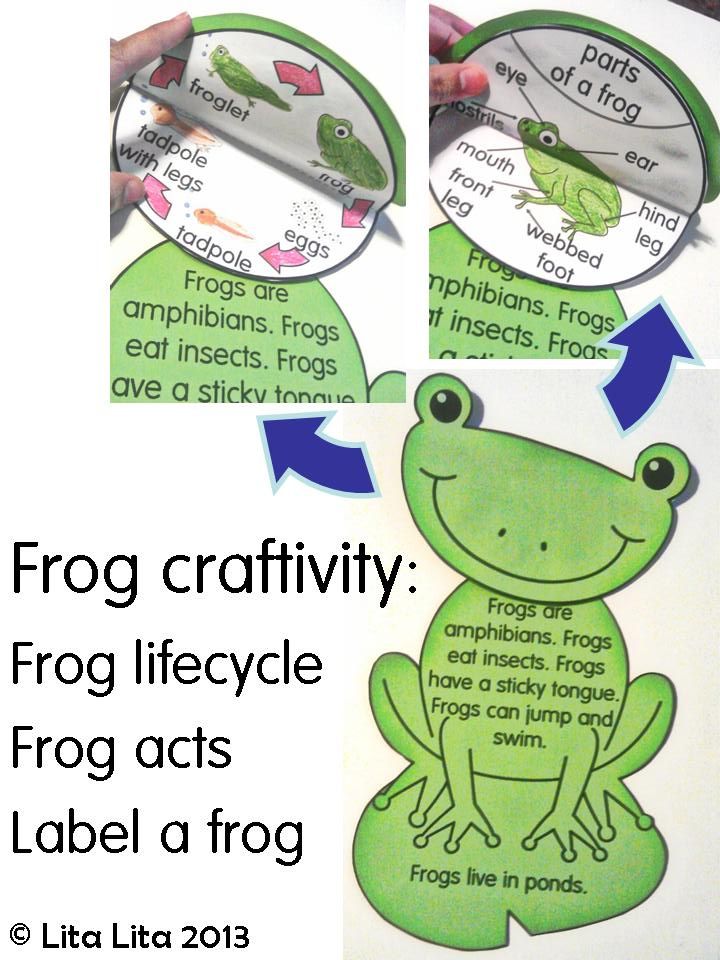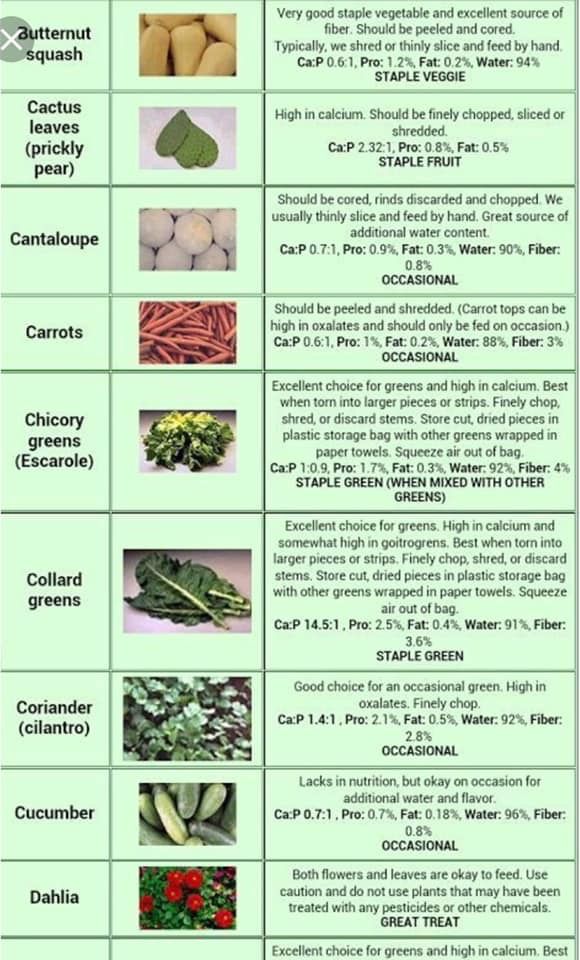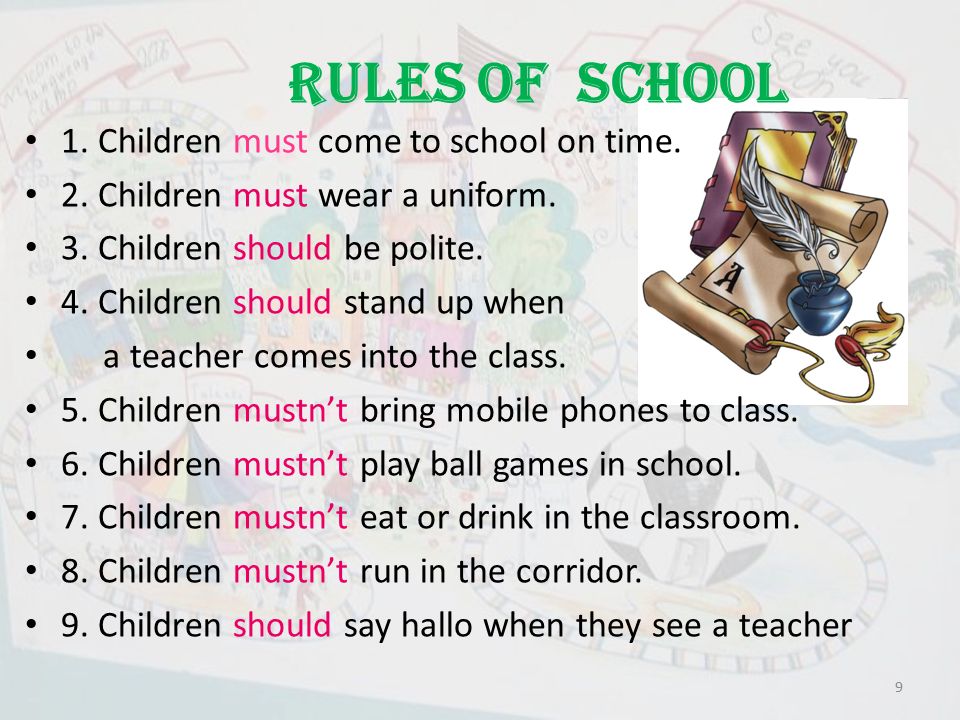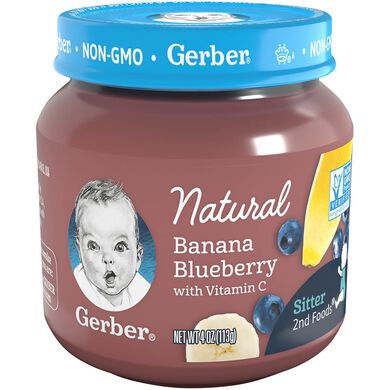How to season baby food
Add Herbs and Spice to Baby Food | Food & Nutrition
January 15, 2018 Clancy Cash Harrison
Photo: Thinkstock/YelenaYemchukFrom vegetables wrapped in nori seaweed sheets in Korea to spiced curries in India to whale blubber in Alaska, children around the world eat a variety of textures and flavors. But historically, parents in the United States feed babies bland foods such as infant grain cereals and plain vegetable purees. While there’s nothing inherently “wrong” with bland food, a huge part of my purpose is to help parents raise their children to be adventurous eaters so they can develop a healthy and positive relationship with food. I know we can do much better than bland.
As a pediatric registered dietitian and mother of two, I introduced fresh herbs and mild spices to my children when they started solid foods at 6 months of age. Per the latest research, a healthy child of 6 months should be exposed to a wide variety of flavors and textures and can eat just about anything (except for foods that pose a choking hazard and those which elicit an allergic response). Of course you always want to follow your doctor’s advice if your child has any food allergies, but this is great news for parents who want to expose their child early and often to a variety of fresh, flavorful enticing foods.
Flavor can be added to baby food in two ways: by serving your child a wide variety of nourishing foods and by adding fresh herbs and mild spices to baby food. This doesn’t mean add a ton of spice or use hot spices — you can save the heat until your child is a bit older and gradually introduce it. What can work well, for example, is a dash of cinnamon in oatmeal, a small heap of garlic pureed with meat or a pinch of cumin in smashed avocado.
Benefits of Introducing Flavor & Texture at an Early Age- Trains the baby’s taste buds to enjoy healthy flavors and will set the foundation for healthy eating habits.
- Teaches the baby to expect change with food. Offering a plain smashed banana one day and a smashed banana with a dash of nutmeg the next can have a valuable influence on the child’s evolving palate.

- Fresh herbs are packed with vitamins and minerals.
- Herbs and spice make food taste amazing!
- Adding herbs and spices to any recipe awakens your inner foodie, generating a creative and fun feeding environment.
Need some ideas to get started? Here are some of my tried-and-true pairings:
- Applesauce and cinnamon
- Bananas and basil
- Sweet potato and cardamom
- Pumpkin and ginger
- Carrots and cinnamon
- Green beans and garlic powder
- Smashed potatoes and garlic
- Beef and garlic
- Chicken and rosemary
- Fish and lemon
When you implement these tips, you will create a change in taste and expectation for your baby. When babies learn to accept change with food, they become less likely to get stuck in food ruts.
- Start slowly. If your baby loves bananas, add a dash of cinnamon.
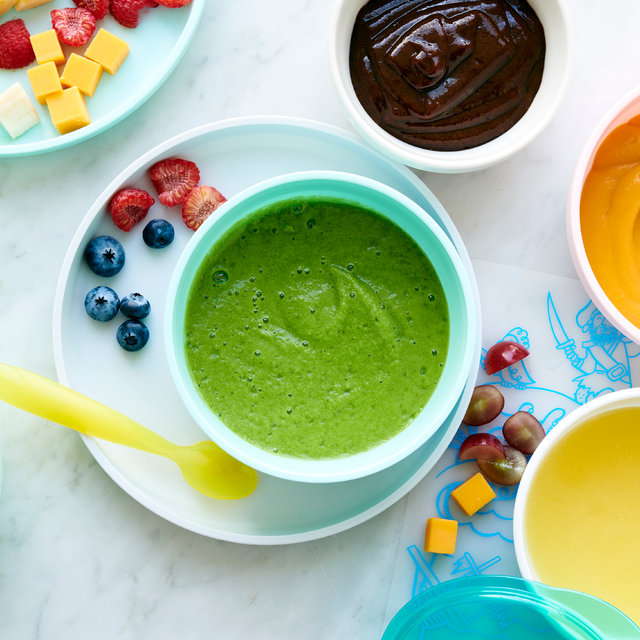
- Use small amounts. A touch of dill can make fresh peas taste spectacular!
- Prepare fresh leafy herbs properly. Puree or finely mince fresh herb leaves, as large leaves can be a choking hazard. Remember to wash all fresh produce, including herbs.
Clancy Cash Harrison
Clancy Cash Harrison, MS, RDN, FAND, is a TEDx speaker, author of Feeding Baby, and food justice advocate. You can find more information at her website and follow her on Facebook and Twitter.
- Featured
Baby food flavors: Using spices and seasoning in baby food
Baby food doesn't have to be bland – in fact, spices and seasonings are encouraged. The more variety, the better, to expand your baby's tastes. You don't have to make separate food for your baby – little ones can eat what the rest of the family is eating, as long it doesn't contain added sugars.
Many babies are ready for solid foods by the time they're around 6 months old, and parents often turn to such traditional first foods as infant cereals and other bland fare. Plain food isn't necessarily bad for babies, but too much of it can deprive them of important nutrients and may make them less likely to accept different textures and flavors. According to the American Academy of Pediatrics, it's important to offer your baby a variety of healthy foods.
Plain food isn't necessarily bad for babies, but too much of it can deprive them of important nutrients and may make them less likely to accept different textures and flavors. According to the American Academy of Pediatrics, it's important to offer your baby a variety of healthy foods.
So how do you get your baby to eat a variety of food from an early age? Here's the latest thinking on how to raise an adventurous eater.
Use spices for baby food
While babies throughout the world are dining on complex, flavorful cuisine, many babies in the United States are gumming plain, tasteless mush. The reasons we continue to serve babies bland food are open to debate, but one thing is certain – they're not based on research. In other words, a culinary walk on the wild side won't hurt your baby in the slightest.
And breastfed babies have actually walked that way already: Breast milk takes on the flavors of the food the mother eats. So if you dine at your favorite Indian restaurant and then nurse, your baby will also enjoy the taste of an Indian meal.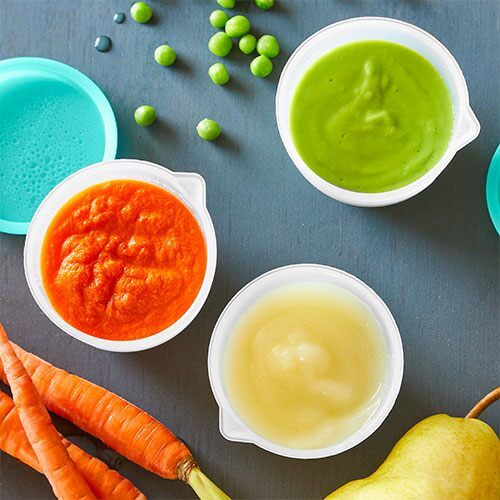
So toss some rosemary in with that squash, liven up that chicken with a dash of cumin, and give those mashed potatoes a kick with a blend of paprika and parsley. You may be surprised by your baby's reaction.
Contrary to popular belief, you don't need to banish hot spices from the highchair tray either. Of course you'll want to steer clear of anything that could irritate your baby's skin or mouth (so no habaneros yet), but there's no harm in letting your baby try mildly or moderately spicy food. For example, milder chiles, such as Anaheims and poblanos, add flavor without causing pain. If anyone raises an eyebrow, just say that babies in other parts of the world thrive on spicy food.
Cooking with herbs and spices is a great way to expand your baby's palate, but skip the sugar (see next tip) and salt when preparing food for your little one. Not only are they unhealthy, but they can also lead to poor eating habits and health problems, such as obesity, diabetes, and heart disease in childhood and later in life.
Avoid added sugars
Sugars that exist naturally in foods, such as the fructose in an apple or the lactose in cheese, are fine. But watch out for added sugars. These are sugars or syrups added to foods or beverages when they are processed or prepared. These are products like corn syrup, dextrose, maltose, and sucrose.
The U.S. Department of Agriculture and the Department of Health and Human Services recommend that children younger than 24 months not consume any added sugars.
Advertisement | page continues below
You likely won't have problems with jarred baby food or whole-food purees you make at home. But as your little one moves on to finger foods, snacking, and eating what the family eats, be mindful that added sugars can be found in surprising places, such as in ketchup and soups.
Limit junk food
Everyone knows that junk food is unhealthy, but the negative effects can be much more serious for babies. (Unfortunately, some classic kid foods actually qualify as junk.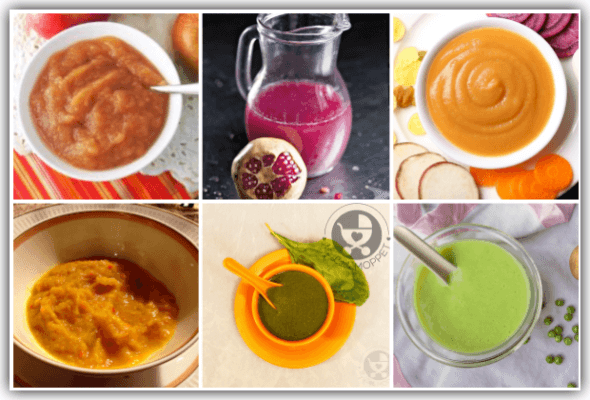 See our list of the worst foods for babies.)
See our list of the worst foods for babies.)
That's because even a very small serving of sugary or salty junk food is likely to make your baby feel full, leaving less room for healthier food with the nutrients necessary for brain growth and development.
Does this mean you're a bad parent if you let your little one sample a french fry or gnaw on a corner of your chocolate chip cookie once in a while? No – just don't make it a regular habit because it could encourage your baby to develop a taste for extra sugary or salty foods.
Give your little one homemade food for babies
and for grown-ups"Homemade baby food" sounds daunting, but it's surprisingly easy and doesn't require a nutrition degree, gourmet cooking skills, or fancy equipment. Making baby food can be as simple as mashing up a banana or avocado with a fork, squashing canned beans together with some garlic, or pureeing veggies steamed with spices.
And as long as you're making something healthy, your baby can eat the same food you do – no need to make separate meals! Just use a blender, food processor, or baby food maker to make food the right consistency for your baby.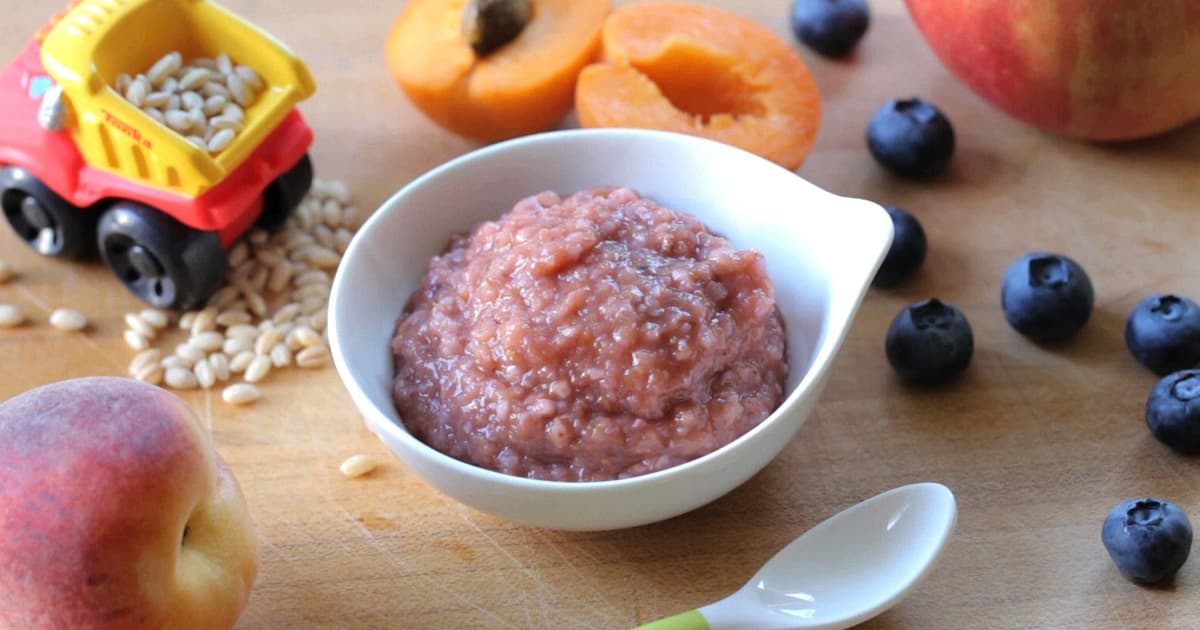
Or forget the purees altogether and try baby-led weaning: Place large, soft chunks of food on the table or highchair tray and let your baby feed themself.
"There's a lot of confusion when it comes to organics because there's no conclusive evidence that they're healthier than conventional foods," says dietitian and mom Jodi Greebel of New York. And there's conflicting evidence about whether pesticides and hormones in conventional foods are harmful.
"But the general feeling is that anything harmful will have a stronger effect on babies because of their small size – bad substances won't be as diluted as they are in an adult."
Some studies suggest a link between pesticide exposure and cancer as well as developmental problems in children, including attention deficit hyperactivity disorder and poor intellectual development. But the short-term and long-term effects of pesticide exposure are still poorly understood, and experts disagree on just how concerned parents should be.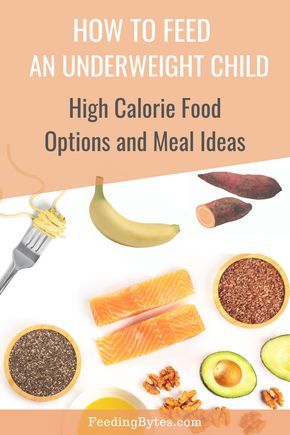 In deciding whether to feed your baby all, some, or no organic food, consider what works for your family and your budget.
In deciding whether to feed your baby all, some, or no organic food, consider what works for your family and your budget.
The organic factor also matters more with some foods than others. For example, apples, spinach, and strawberries have the highest pesticide residue levels. On the other hand, sweet corn, cabbage, and avocados tend to have relatively low levels. The nonprofit Environmental Working Group ranks fruits and vegetables from best to worst in terms of pesticide residue.
You can also buy organic meat and poultry when possible, but keep in mind that conventional meat and poultry can still be free of antibiotics and hormones. The federal government prohibits the use of hormones when raising hogs and poultry, so just check packages of beef for a label like "no hormones administered," and check meat and poultry products for labels indicating that no antibiotics were added. Visit the United States Department of Agriculture's website for more information about meat and poultry labeling terms.
Whatever you decide, remember that general good nutrition trumps organics.
Expand your baby's tastes
Although consistency in everything from bedtime to discipline is a hallmark of sound parenting advice, a little inconsistency at mealtime can be a wonderful thing. Changing up the menu broadens your baby's palate and helps to ensure good nutrition, especially when it comes to produce. (For ideas to get you started, check out these experts' suggestions for adventurous first foods.)
Often this means heaving ourselves out of a well-worn food rut. Stuck on sweet potatoes? Shake things up with some steamed beets. Smashed peas and carrots every night? Consider pureed brussels sprouts with a little lemon juice instead. Oat cereal overload? Try quinoa cooked in vegetable broth.
Feed your baby the necessary fats
Grocery store shelves are bursting with low-fat and nonfat products – should babies be eating these? Absolutely not. Fat is essential for babies' growth, and both breast milk and formula contain a lot of it.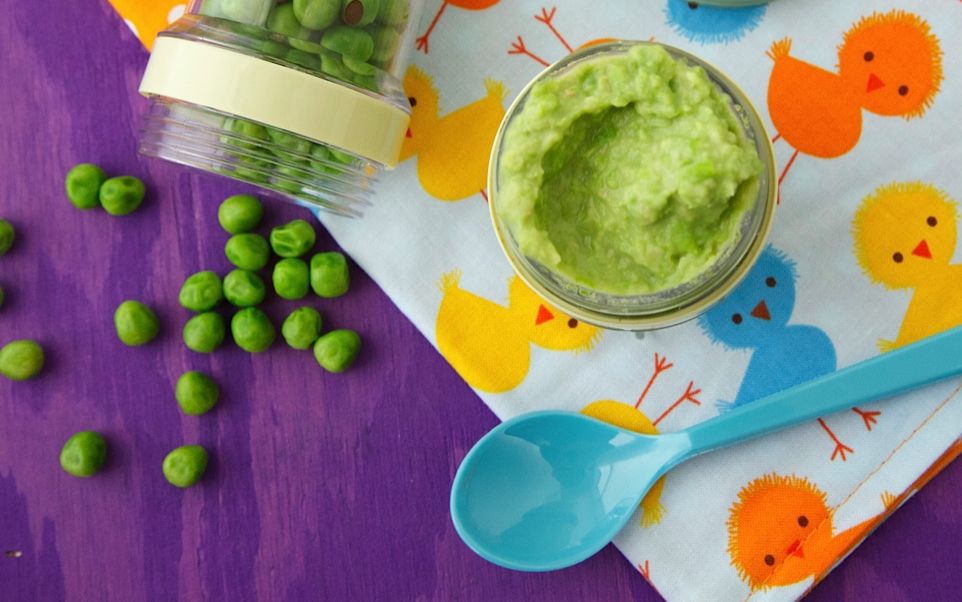
Experts recommend serving babies full-fat dairy products, such as cheese and yogurt, until age 2.
But don't give your baby cow's milk to drink until after their first birthday. At that point, serve whole milk (unless the doctor tells you otherwise).
The unsaturated fat in avocado makes it another wonderful choice for your baby, and the same goes for salmon and other fatty fish because they contain essential fatty acids, including omega-3s.
Offer rejected foods again – and again
When it comes to sampling new foods, babies make harsh critics. Offer a mouthful of your famous pureed green beans with dill, and your baby may swallow it reluctantly – or spit it out and push your hand away, mouth clamped shut.
Don't force the issue. For one thing, your baby may just not be hungry. Babies' appetites fluctuate, and they need less food than many of us think.
On the other hand, your baby might be turned off by the look, smell, or taste of a food. This doesn't mean you should ban it from your table permanently.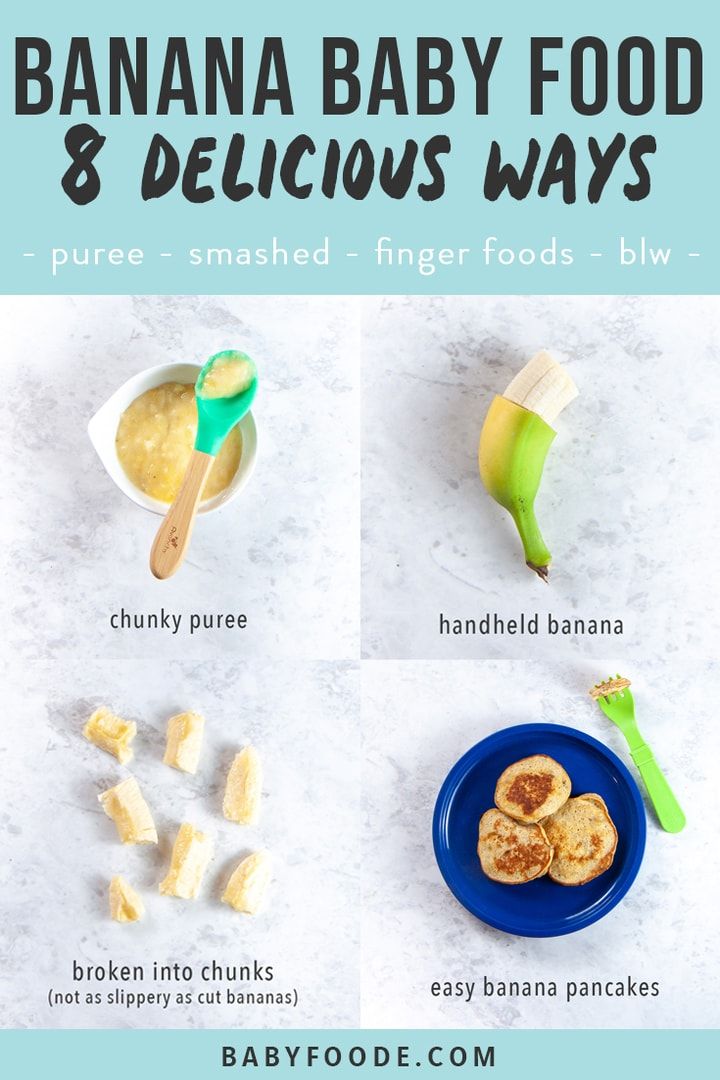 If you keep trying, your baby may begin to tolerate that new food after you expose it to them a few times.
If you keep trying, your baby may begin to tolerate that new food after you expose it to them a few times.
So although it can be frustrating to watch your baby reject the food you've lovingly prepared, take a deep breath and try again another day.
Demonstrate the joy of eating
"Dining with one's friends and beloved family is certainly one of life's primal and most innocent delights," Julia Child famously said.
Enjoying your food is the most meaningful thing you can do to foster a similar appreciation in your little one. Babies watch their parents and model them, so experiment with different flavors and new foods. Let your baby see you eating and savoring lots of different healthy foods. If you enjoy the simple pleasure of eating good food, chances are your baby will too.
Unfortunately, it's also easy to become frustrated and stressed about your baby's eating habits. Their fickle appetite, your concern about whether they're eating enough, and the sheer messiness can conspire to turn feeding time into a chore – or even an outright battle.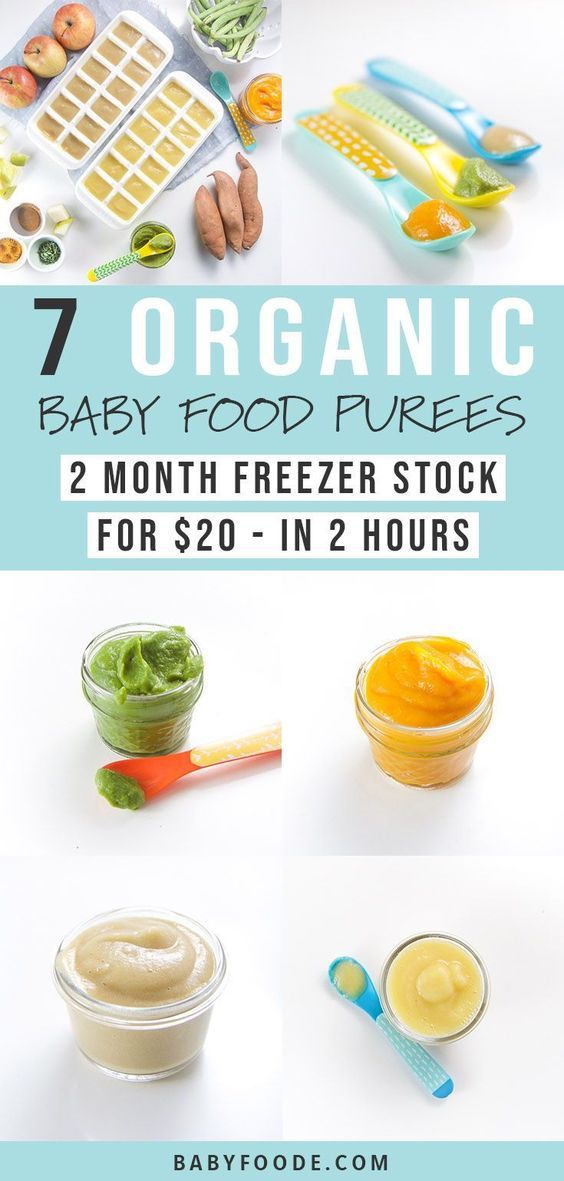
It doesn't have to be this way. There are several things you can do to make mealtime an enjoyable experience. First, make sure you have enough time so that you aren't hurrying your baby's meals. And hard as it is, accept the mess as a given – letting babies play with their food is actually good for them. They're learning about new tastes and smells while they're playing, and they're learning that eating can be fun.
To make cleaning up easier, put a splat mat under your baby's highchair. On warm days, consider letting your baby dine topless to lighten your laundry load. And take comfort in knowing that everything is washable, including your baby.
Baby food at home: recipes, video
Growing up a little person is a delightful process that cannot but please the parents of the crumbs. However, the first feeling that mom and dad face when it comes time to introduce complementary foods into a child's diet is confusion.
Which food is the most healthy, hypoallergenic and delicious? Most often, the first "real" meal of the crumbs after mother's milk and formula is vegetable or fruit puree. The choice of baby food on store shelves is very wide - each manufacturer tries to convince the buyer that jars with beautiful labels contain only natural products, there are no dyes, sweeteners and other harmful additives. A variety of "meals" for babies in factory packaging marked "3+ months." does not guarantee the true usefulness of the product that is inside. Every mother understands that complementary foods prepared on her own, from natural products, are much better for her child.
The choice of baby food on store shelves is very wide - each manufacturer tries to convince the buyer that jars with beautiful labels contain only natural products, there are no dyes, sweeteners and other harmful additives. A variety of "meals" for babies in factory packaging marked "3+ months." does not guarantee the true usefulness of the product that is inside. Every mother understands that complementary foods prepared on her own, from natural products, are much better for her child.
Another advantage of making your own baby food is that you can choose the best ingredients, wash fruits, berries or vegetables thoroughly, peel them well and remove damaged parts. In addition, the parents of the crumbs themselves can choose the way - how best to cook baby food: food can not only be boiled, but also baked in the oven or cooked in a double boiler.
It is also important that home-made baby puree is much tastier, it will undoubtedly be useful for a growing body and will not cause allergies! Even the simplest children's dish, prepared by mom, keeps the warmth of caring hands and cannot be compared with expensive dishes from the store.
What should be the correct complementary foods for children? Of course, you should start with one ingredient (such purees are called one-component purees), then move on to more complex options. Experts emphasize that the most suitable product for the first "dish" is zucchini. Cauliflower can also be considered neutral. Gradually it will be possible to introduce carrots, pumpkins, potatoes, broccoli and green peas. At the first stage of the introduction of complementary foods, it is better to give preference to vegetable purees and switch to fruit purees when the child already treats “serious” food well.
The basic rules and principles of preparing high-quality baby food yourself:
- it is best to take fresh products for preparations: fruits from the tree, berries from the bush and vegetables from the garden are much healthier than those that have already been in the refrigerator for a week. If there are no seasonal vegetables at the time of preparation, the use of frozen foods is acceptable, but in this case, try to give preference to whole fruits - they retain the greatest amount of nutrients;
- only filtered water should be used for cooking vegetables;
- the preparation of baby food requires, if not separate dishes, then thoroughly washed.
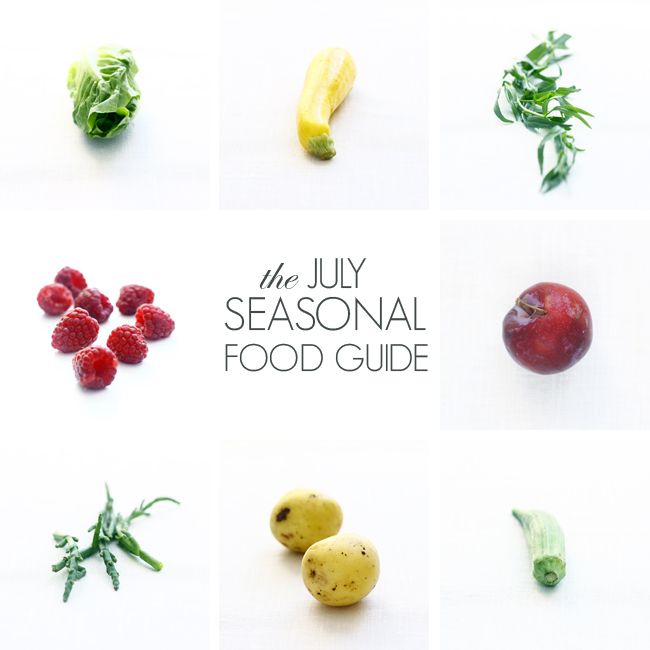 Do not, for example, cut vegetables on a meat board. If there is a dog or cat in the house, then you need to restrict her access to the kitchen when food is being prepared;
Do not, for example, cut vegetables on a meat board. If there is a dog or cat in the house, then you need to restrict her access to the kitchen when food is being prepared; - It is not recommended to use vegetables and fruits in the diet of infants, in which the content of chemical additives is consistently high. These often include watermelons and melons, beets, spinach and lettuce;
- It is better to soak vegetables purchased on the market with water before cooking: put carrots, potatoes, zucchini and cauliflower in filtered water for a couple of hours - this will remove nitrates;
- do not leave excess mashed potatoes for the next meal: the child should be given only freshly prepared food, and "yesterday's" mashed potatoes are best eaten by adults or given to pets;
- you can choose cream, boiled egg yolk, grated cheese or finely chopped dill as an additive to puree - this will diversify dishes for children from 8 months;
- try it! Children's food can and should be enjoyed by an adult.

There is another question that often worries parents: is it permissible to preserve baby puree and how to do it correctly? After all, such complementary foods for the developing body of a small child must be prepared daily for one or even two or three years: until the baby is ready to eat adult food from the common table. Not every mother has the time and opportunity to prepare baby puree daily, but you don’t want to buy food for the baby in the store. In addition, it is obvious that in the winter-spring period it is almost impossible to find fruits and vegetables grown without the addition of chemicals. The answer to the question is quite simple: the requirements for the conditions for preparing baby food are very strict (keeping the temperature, sterilizing jars, etc.), but using an autoclave solves all problems: all that is required is to load jars with blanks into the autoclave for 20 minutes and set temperature 120 degrees. After cooling, it is better to store baby food in a dark, cool place for about 12 months, daily delighting the child with homemade homemade food.
Pumpkin puree: tender and fragrant
Pumpkin is a tasty vegetable that is good for babies. This fruit has a beneficial effect on digestion, is well absorbed by the child's body and is rich in various vitamins: A, C, B, B2, E, PP, T. In addition, the carotene content in pumpkin is 5 times higher than in carrots!
Baby pumpkin puree has a sweet taste, so the kids eat this dish with great pleasure. For preparations, it is better to buy small whole pumpkins, as they usually taste better than large ones and are easier to peel.
- Rinse pumpkin well under running water, peel, cut in half, remove seeds.
- Then it is necessary to cut the fruit into small cubes, place in a saucepan and cover with water. Cooking time after boiling - 20 minutes. You can also steam pumpkin: it will retain more nutrients with the same cooking time.
- The next step is to beat the cooked pumpkin with a blender until the consistency of a gentle puree. If the dish turned out to be thick, add water or milk (milk mixture).
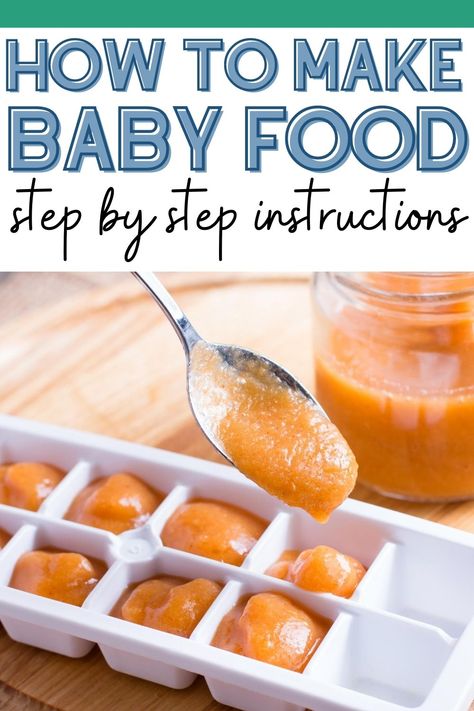
- Vegetable oil and salt are added to pumpkin puree to taste, but these additives should be used with caution: only if they are acceptable for the age of the child.
For babies older than 8 months, pumpkin puree is supplemented with other fruits and vegetables, and also added to porridge.
Broccoli puree: simplicity and elegance
Broccoli is not just cabbage, but a storehouse of vitamins and microelements! Beautiful on the outside and fantastic on the inside - the high content of protein and vitamin C (there is more in broccoli than in citrus!) deserves special attention. There are many articles on the Internet about the benefits of broccoli, and preparing this product is not at all difficult.
To prepare this type of cabbage for baby food, you need to choose the highest quality product: the inflorescences must be unopened, green, moderately elastic.
- Broccoli should be washed, cut into pieces and boiled. Steaming will take 20 minutes, in water - faster: fresh cabbage should be boiled for a little more than 5 minutes, and frozen - at least 10.
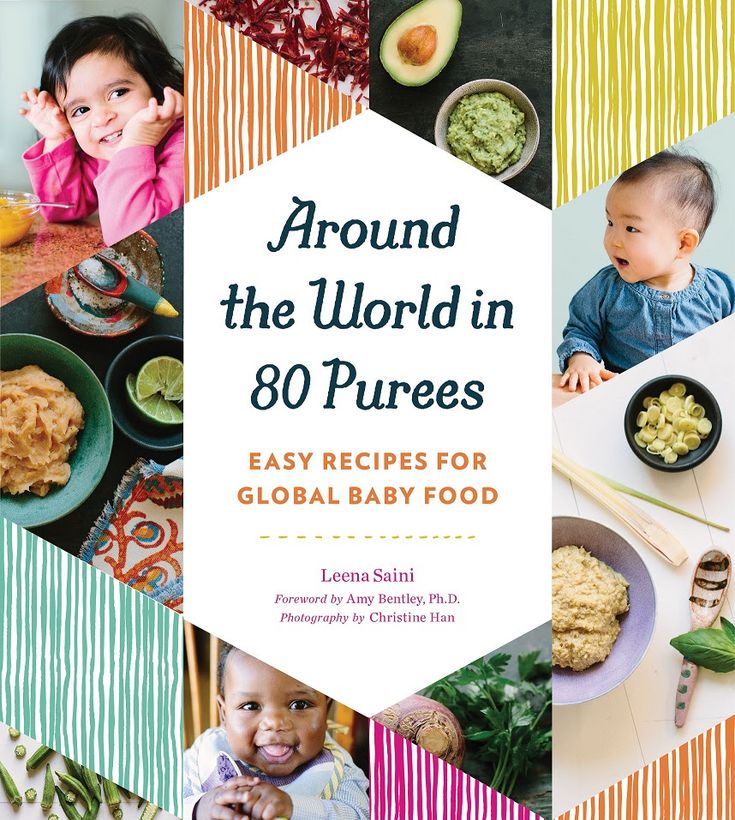 When cooking, do not pour a lot of water, it should only cover the vegetables a little.
When cooking, do not pour a lot of water, it should only cover the vegetables a little. - When the cabbage is cooked, take it out, transfer it to a blender bowl and grind to a puree state, add a little warm boiled water.
- Add salt and butter to taste.
Pear puree: a fragrant dessert
It's no secret that babies love fruit puree - almost all children like sweet dishes. The pear is a suitable option for the first one-component fruit food - a sweet fragrant fruit that has a high concentration of vitamins, stimulates digestion and almost never causes allergies.
If you want to cook a safe puree for your child at home, then it is best to choose green pears, these are the fruits that are considered to be the least allergenic.
- Fruit must be peeled, core removed with seeds, cut into cubes.
- Transfer the pear to a heavy-bottomed enamel saucepan, add a little water and simmer over low heat for 15-20 minutes.
- Then transfer to a blender bowl and puree until smooth.
 If the puree is too thick, add a little warm boiled water.
If the puree is too thick, add a little warm boiled water. - You can dilute the dish with milk or formula - it depends on the taste preferences of the baby.
The same recipe is used for applesauce. In the future, try to combine these two fruits in one dish.
Classic apple-zucchini puree
A good appetite of a baby pleases every mother, but little gourmets are often capricious, and it is not easy to please them. Zucchini and apple puree is a classic combination of products that will diversify the baby's menu already in the fifth or sixth month of life.
This complementary food contains only hypoallergenic products, has a positive effect on the functioning of the heart, and stimulates the strengthening of the immune system.
- Selected products should be thoroughly washed, peeled, core removed from apples.
- Cut zucchini and apples into cubes, put fruits in a cooking pot first - they should cook for 5 minutes longer, and then vegetables.
 The total cooking time is 20 minutes.
The total cooking time is 20 minutes. - When the food becomes soft, it is necessary to grind it to a puree state using a blender.
- To taste - dilute with water, add salt, oil.
This puree can be considered an independent dish for the little ones or become a delicious side dish for older kids.
Colorful carrot and potato puree
For many parents, carrots and potatoes are the easiest and most understandable type of complementary food for the baby. However, if you cook and serve standard products a little differently than usual, you can improve the traditional taste of a classic dish.
For baby puree, young potatoes should not be chosen - they contain a lot of starch. Carrots, on the contrary, it is better to buy young ones.
- Wash and peel the vegetables thoroughly and cut into cubes.
- It is better to steam the mashed potatoes and carrots, the vegetables should be boiled separately. Cook until tender, 20 minutes on average.
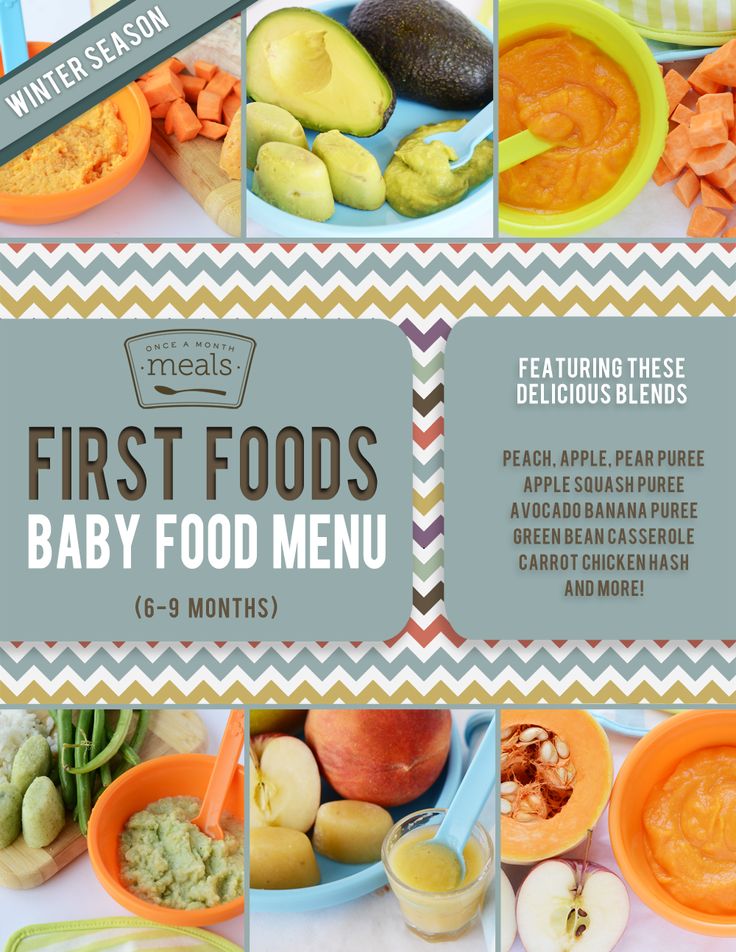
- Separately puree the vegetables in a blender, diluting with warm water if needed.
Both types of puree are beautifully placed on a plate without mixing: the child can decide for himself whether to mix food or eat separately.
Exotic variety: mango puree
Tropical fruits should not be offered to a small child before the age of 7-8 months and only if there was no allergy to other foods.
Mango is an aromatic fruit with an original pleasant taste. This fruit helps to overcome colds, reduce inflammation in the body, improve sleep and normalize the functioning of the stomach.
To feed the baby, ripened fruits should be selected - quite soft, yellow-red in color.
- Fruit should be peeled and pitted, cut into cubes.
- Put the raw mango into a blender, purée, transfer to a heavy-bottomed pot and boil for a few minutes.
Older children may be offered uncooked mango puree. This fruit is completely independent - no need to add sugar or water!
Sweet pumpkin puree with apple
This puree is called sweet, since both pumpkin and apples are foods with sufficient sugar content. Such a dish is well suited as a dessert for children who already eat “serious” food well - vegetable purees and cereals.
Such a dish is well suited as a dessert for children who already eat “serious” food well - vegetable purees and cereals.
In addition, such complementary foods are a great option for the autumn-winter period: seasonal products contain enough choline, a lot of fiber, natural proteins and vitamins (groups A, B, C, E, etc.), zinc, sodium, calcium and only!
- Pumpkins and apples must be peeled, peeled and seeds removed, cut into cubes and sent to a double boiler.
- Cook for about 20 minutes until the food is soft. Then place them in a blender bowl, add raisins and chop. If the child chews well, mash everything with a fork, and leave the raisins whole.
Hearty puree with celery and turkey
For older kids, meat is added to vegetable dishes - turkey fillet is an excellent option for developing a child's taste preferences. Appetizing and fragrant meat puree includes only three ingredients: celery root, turkey fillet, butter.
The proportion of meat and celery should be approximately 10:1, the amount of butter to your taste.
- The turkey fillet must be boiled in the "second stock" for about 20 minutes after boiling.
- Wash, peel and cut the celery root into cubes and put into the boiling broth 10 minutes before it is done.
- After cooking, puree the turkey and celery with a blender, adding stock if necessary.
- Salt to taste and add oil. For one children's serving, 3-5 grams of butter is enough.
A child from early childhood will begin to get used to full-fledged homemade food without the addition of preservatives and harmful components, and will grow up healthy and strong. In summer and autumn, parents can make preparations: prepare potatoes, carrots, beets, pumpkins and apples for storage (these products are stored for a long time - they do not need to be frozen), freeze berries and seasonal fruits, or roll ready-made mashed potatoes into jars! Homemade baby food without unnecessary flavor enhancers and salt is the best complementary food, warmed by mom's love.


